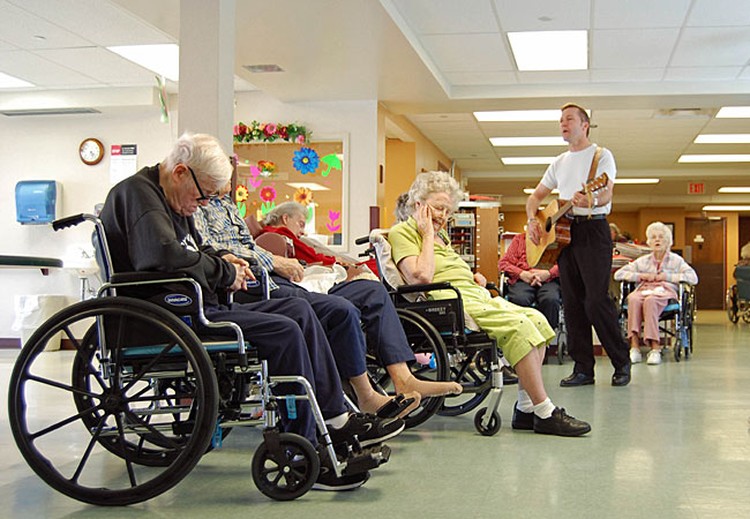My Greatest Fear

From my living room window, I look out on a pretty little park—and the nursing home across the way. I know someone who lives there but I haven’t visited her, I’m ashamed to say. The place scares me because it reminds me that there might be a nursing home in my future.
I’m not the only one with this phobia. According to more than one survey, most Americans are more afraid of ending up in a nursing home than they are of dying. Generations ago, people had nightmares about the poorhouse; now we dread nursing homes—the indirect descendants of poorhouses.
Are nursing homes (also known as skilled nursing facilities) really so terrible? Some certainly are.
Imagine you’re old and frail, living out your days in an institution that resembles a hospital. It has long corridors, a nurses’ station and rigid schedules designed not for your comfort but for the convenience of staff. You have a semiprivate room, a joke since it offers no real privacy. At mealtimes, you’re wheeled into a huge dining room where aides shovel food into the waiting mouths of those who can’t feed themselves.
Supervisors warn the employees against becoming emotionally involved with their charges. Overworked, underpaid, the aides are “the powerless serving the powerless,” as author Wendy Lustbader observes elsewhere on this website. It’s no surprise that there are nursing homes where the staff turnover rate some years is 100 percent.
Fortunately, there are movements afoot to transform long term care. Instead of the situation I just illustrated, imagine this:
You’re old, frail and can’t take care of yourself, but you live in an ordinary-looking house in a normal neighborhood. You have your own room and bath and share a central living area with seven to 10 other residents. At mealtimes, you all gather with staff and guests at a long table near an open kitchen. Nothing is regimented. If you want to stay up half the night and sleep late in the morning, that’s fine. And yet you get the medical care you need, and the house—called a Green House home—meets all the state requirements for a nursing home.
The Green House staffers—nurses’ aides with extra training—help you in the usual ways, but they also cook meals, do laundry and order supplies. They’re better paid and have more authority than aides in traditional nursing homes, and they have ample backup from doctors and nurses.
Green House homes are the brainchildren of geriatrician William Thomas, MD. The first ones opened in 2003, and there are now 179 scattered around the country with over 150 more in development. They’re described in videos here.
When researchers compared conventional nursing homes with Thomas’s new versions, they found that both residents and staff are happier in a Green House home. The staff turnover rate is low and residents get better care. Sometimes people who used wheelchairs in the nursing homes they came from start to walk again in the new, more manageable environment. Others, once withdrawn and uncommunicative, begin to join conversations. All this, for about what it costs to run a traditional nursing home.
There’s no question that many nursing homes are changing for the better. So, am I still scared of them? Not if they’re Green Houses homes.
